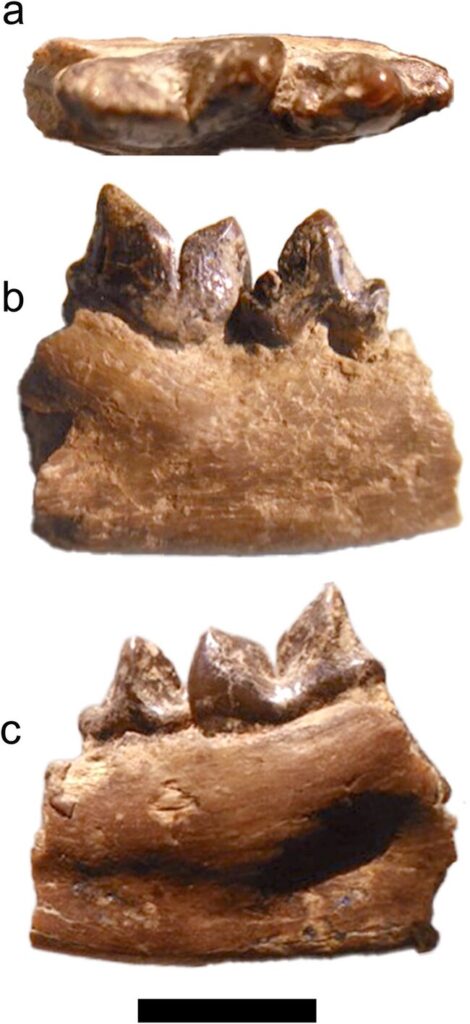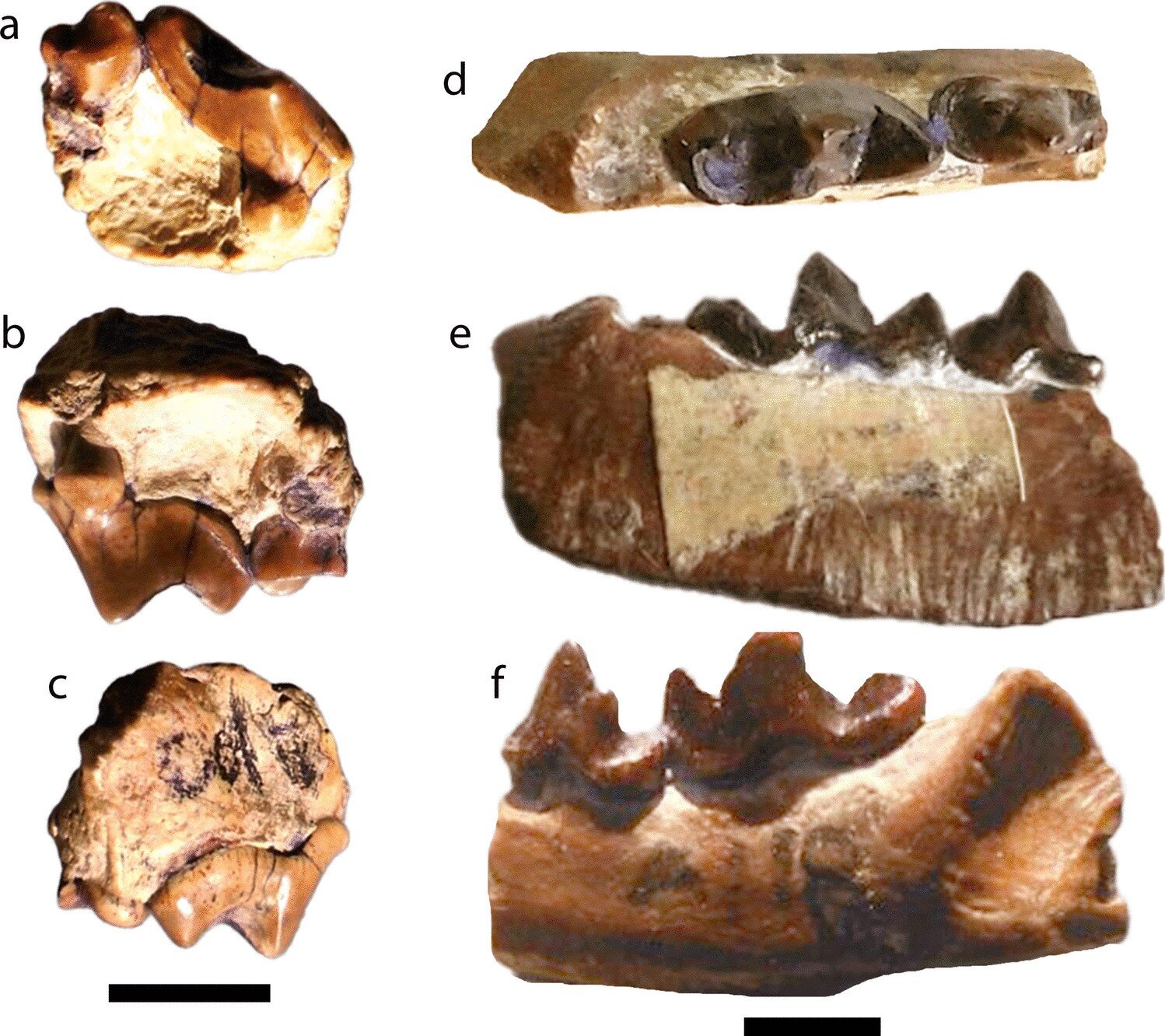A groundbreaking study led by Dr. Steven Jasinski, a professor at Harrisburg University of Science and Technology (HU), has uncovered new and exciting insights into the fossil carnivoran mammals that once roamed the foothills of the Himalayan Mountains in northern India. This important research, which was published in the Journal of Mammalian Evolution, marks a significant addition to our understanding of ancient ecosystems and biodiversity. The study, conducted in collaboration with scientists from the Paleo Research Society, the Paleo Museum, the University of Sialkot, and the University of the Punjab, focuses on fossil specimens that date back between 10 million and 4 million years ago. These newly identified fossils help paint a richer picture of the region’s ancient carnivorous mammal species and provide a deeper understanding of how these creatures interacted with their changing environment.
The Siwaliks: A Treasure Trove of Fossilized Wonders
The Siwaliks, also referred to as the Siwalik Group, are a mountain range that forms the outer edge of the Himalayas, stretching across northern India, Pakistan, Nepal, and Bhutan. This region is home to one of the most important and well-studied fossil deposits in the world. The Siwalik fossil beds, which have been dated to span from approximately 18 million years ago to around 1 million years ago, contain an exceptionally diverse range of prehistoric life forms. These include artiodactyls (such as bovids, suids, and giraffoids), perissodactyls (like rhinoceroses and horses), proboscideans (elephants and relatives), rodents, primates, and, of course, carnivorous mammals.
For years, paleontologists have studied the Siwalik deposits to learn more about the mammals that lived in the shadows of the mighty Himalayas during the Miocene and Pliocene epochs. The latest study, led by Dr. Jasinski, zeroes in on the carnivoran mammals—those species at the top of the food chain in these ancient ecosystems. This group includes mustelids (weasels, otters, ferrets), viverrids (civets, genets), and felids (cats), many of which were predators with specialized adaptations that allowed them to thrive in their environments.
Dr. Jasinski and his team focused on fossils collected from the Haritalyangar region in northern India, a site that has yielded numerous specimens that provide new information about the composition of the carnivorous mammal population that inhabited this part of the world millions of years ago.
Fossil Discoveries: New Species and Surprising Findings
The most exciting aspect of the study is the identification of several new species of fossil carnivorans, along with previously unreported fossil material from known species. These discoveries are pivotal in expanding our knowledge of ancient mammalian life in the Siwaliks and beyond.
Among the most notable findings is the identification of a rare mustelid species, Martes lydekkeri, previously known only from limited fossil material. The new specimens represent the first upper-jaw fossils of this species, offering a more complete picture of this animal’s anatomy. Mustelids are typically small carnivorous mammals, such as weasels, ferrets, and martens, which are still found around the world today. Martes lydekkeri was a mustelid that lived during the Miocene, a time when these animals were diversifying and occupying various ecological niches.
In addition to Martes lydekkeri, the research team uncovered new species of carnivorans that are even more remarkable. The first of these is Circamustela bhapralensis, a newly described mustelid that is the first of its kind to be reported on the Indian subcontinent. This species, which weighed between 1 and 2 kilograms (about the size of a modern ferret), represents the youngest known member of the genus Circamustela. Prior to this discovery, the species was known only from fossil records in Europe. The presence of this species in northern India suggests that there were migrations of smaller mammal species between Europe and Asia during the Late Miocene, around 5 million years ago.
The second new species identified by the team is Vishnuictis plectilodous, a viverrid species with complex, specialized teeth. Viverrids, which include animals like civets and genets, are known for their omnivorous diets and wide geographic distribution across Asia, Africa, and southern Europe. Vishnuictis plectilodous is one of the largest viverrids ever discovered, possibly reaching the size of a leopard and weighing over 100 kilograms. Its teeth indicate a varied diet, unlike the more carnivorous diet seen in other members of its family. The discovery of such a large and distinctive viverrid species is a major step forward in understanding the ecological roles that these animals played in the ancient ecosystems of the Siwaliks.

The Changing World of Ancient Carnivores
The fossil record from the Siwaliks provides crucial insights into the shifting environmental conditions that these carnivorous mammals faced millions of years ago. During the period in which these fossils were deposited, global temperatures were gradually cooling, which significantly impacted both plant and animal life. This cooling trend, along with other environmental changes, likely forced mammalian carnivores to adapt to new challenges, whether through migration, changes in diet, or alterations to their physical characteristics.
Dr. Jasinski emphasized the importance of understanding these changes, noting that studying the past not only helps us understand ancient ecosystems but also provides valuable clues about how our world may continue to evolve. “Our research is helping us not only understand the biodiversity of our world but also providing crucial information for how our world has changed,” said Dr. Jasinski. “This is vital to our understanding of how our world will continue to change due to the shifting, potentially volatile, conditions we are currently dealing with.”
Indeed, the ancient mammalian ecosystems of the Siwaliks present a fascinating glimpse into how species adapted and survived in a world that was undergoing dramatic environmental transformations. By examining these past ecosystems, scientists can better predict how modern-day species will respond to climate change and other global challenges.
The Role of Migration and Interactions Between Continents
One of the most intriguing aspects of this study is the suggestion that there were migratory pathways between Europe and Asia during the Late Miocene. The identification of European species, such as Circamustela bhapralensis, in the Siwaliks raises the possibility that small mammal species were able to travel between these two continents, potentially crossing through land bridges or other now-submerged corridors. Dr. Sayyed Ghyour Abbas, of the University of Sialkot, suggested that the evidence from the study points to complex interactions between European and Asian ecosystems, further complicating our understanding of ancient mammalian migration patterns.
The fossil record also suggests that the ecosystems of the Siwaliks were not just a simple food web, but rather a dynamic and interwoven system of predators and prey, each playing a vital role in maintaining the balance of life. By better understanding these interactions, scientists hope to gain new insights into how ecological systems functioned in the past and how similar systems might be affected by modern-day environmental pressures.
A Clearer Picture of the Past and Future
The work done by Dr. Jasinski and his colleagues represents a significant step forward in our understanding of ancient carnivorous mammals and the ecosystems they inhabited. As the team continues to gather more fossils from the Siwalik deposits, they hope to uncover even more species and gain a clearer understanding of the biodiversity of the region. These discoveries are critical not just for their historical value but also for their potential to inform ongoing conservation efforts.
“If we can use what we know about the past to predict aspects of our future,” said Dr. Jasinski, “we can work to counteract some of those potential aspects of our future, and maybe even use that data to help protect our ecosystems for future generations.”
The findings from this study are just the beginning of what promises to be a continued exploration of the fossilized world of the Siwaliks. As more fossils are unearthed and analyzed, they will undoubtedly provide even more clues about the fascinating and ever-changing world of ancient carnivores, offering new perspectives on how life on Earth has evolved and how we can better understand and protect the biodiversity of our planet moving forward.
Reference: Anek Ram Sankhyan et al, Rare carnivorous mammals from a diverse fossil assemblage from the Middle Siwaliks of Haritalyangar area, Himachal Pradesh, North India, Journal of Mammalian Evolution (2025). DOI: 10.1007/s10914-025-09749-4
